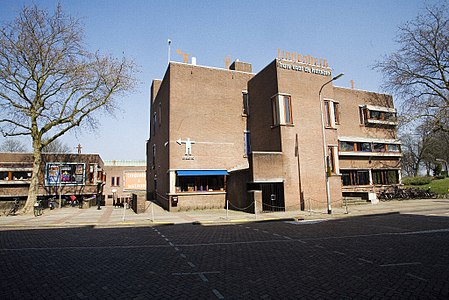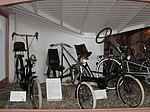Lindenberg Nijmegen Culture House
Buildings and structures in NijmegenTheatres in the Netherlands

The Lindenberg Nijmegen Culture House, founded in 1972, was a project opened by the Netherlands Minister of Culture, Piet Engels. It is a cultural house (theatre) in Nijmegen, Netherlands, on the Ridderstraat next to the Valkhof Museum. The Lindenberg operates theatre programs, hosts performances, hosts education courses, and has a cafe. The organization also receives a subsidy from the government.
Excerpt from the Wikipedia article Lindenberg Nijmegen Culture House (License: CC BY-SA 3.0, Authors, Images).Lindenberg Nijmegen Culture House
Vleeshouwerstraat, Nijmegen Nijmegen-Centrum (Nijmegen)
Geographical coordinates (GPS) Address Nearby Places Show on map
Geographical coordinates (GPS)
| Latitude | Longitude |
|---|---|
| N 51.84852 ° | E 5.868633 ° |
Address
Vleeshouwerstraat
Vleeshouwerstraat
6511 XR Nijmegen, Nijmegen-Centrum (Nijmegen)
Gelderland, Netherlands
Open on Google Maps










